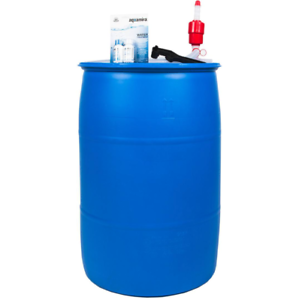
Before, huge dams have regularly been the focal point of water storage endeavours. Numerous huge dams and their supplies have brought huge social and financial advantages. How much bleach to store water , for instance, Egypt’s Aswan High Dam, underlying the 1960s, has shielded the country from dry spells and floods and supplies water used to inundate approximately 15 million hectares. Notwithstanding, dams can likewise have extraordinary adverse consequences. Since silt is caught by the Aswan High Dam, the Nile no longer conveys supplements in huge amounts to the floodplain. This has diminished soil ripeness and expanded the requirement for manure.
- Dammed valleys
A dam built in a valley depends on the normal geology to give the greater part of the bowl of the supply. Dams are commonly situated at a restricted piece of a valley downstream of a characteristic bowl. The valley sides go about as regular dividers, with the dam situated at the tightest down-to-earth highlight give strength and the least expense of development. In numerous supply development projects, individuals must be moved and re-housed chronicled ancient rarities moved or uncommon conditions migrated.
- Waterfront
Waterfront supplies are new water storage repositories situated on the ocean coast close to the stream mouth to store the rising water of a waterway. As the land-based repository development is loaded with significant land submergence, seaside supply is favored financially and in fact since it doesn’t utilize scant land region. Numerous seaside repositories were built in Asia and Europe. Saemangeum in South Korea, Marina Barrage in Singapore, Qingcaosha in China, and Plover Cove in Hong Kong, are a couple of existing beachfront repositories.
- Bank-side
Where water is siphoned or directed from a waterway of variable quality or size, bank-side supplies might be worked to store the water. Such supplies are generally shaped halfway by uncovering and somewhat by building a total encompassing bund or dike, which may surpass 6 km (4 miles) in the periphery. Both the floor of the repository and the bund should have an impermeable covering or center: at first, these were regularly made of puddled dirt, yet this has commonly been supplanted by the cutting edge utilization of moved earth.
- Administration
Administration supplies store completely treated consumable water near the mark of circulation. Many assistance repositories are developed as water towers, regularly as raised constructions on substantial columns where the scene is moderately level. Other assistance supplies can be essentially underground, particularly in more bumpy or precipitous nations.
The phrasing of water storage:
The units utilized for estimating repository zones and volumes shift from one country to another. In the majority of the world, supply zones are communicated in square kilometres; in the United States, sections of land are usually utilized. For volume, either cubic meters or cubic kilometres are generally utilized, with sections of land feet utilized in the US.
The limit, volume, or capacity of a supply is normally isolated into discernable zones. Dead or dormant storage alludes to water in a repository that can’t be depleted by gravity through a dam outlet works, spillway, or force plant allow and must be siphoned out.

